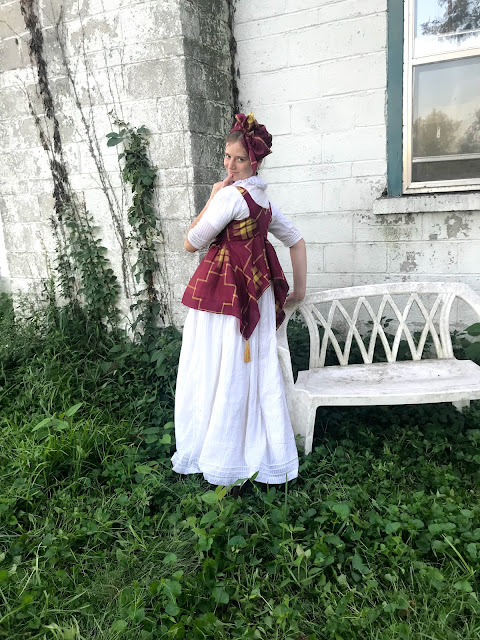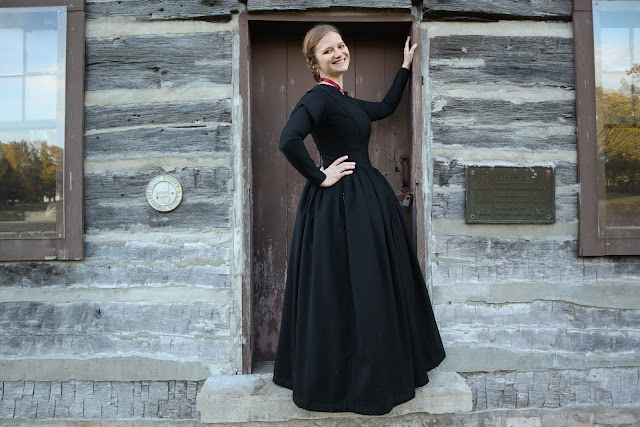It only took me over a year, a request from my sister, and a blog tour, to get around to actually using the metallic gold sweater knit for something. The resulting garment? Well I think it was worth holding onto this fabric for over a year for.
And so, with that said, welcome to my slot on the Winter Wear Designs "Fall into Sewing" blog tour! Now let me tell you how we got here.
Back in the summer, my sister and I were going through my fabric stash, looking for a fabric to complete an outfit I was making for her. We happened across this rather thin, very stretchy, metallic gold sweater knit, and I asked my sister if she liked it. She answered the affirmative and I asked her what she'd like from it. After thinking a moment, she decided it would make a brilliant wrap sweater.
Fantastic! After a year of lurking in my fabric stash this fabric was finally earmarked for a project! I was excited to turn it into something my sister would enjoy wearing, and I knew just the pattern I would use for this wrap sweater of hers.
The Crossroads Sweater by Winter Wear Designs! It's a mock-wrap sweater pattern, which I sewed for myself last fall. I figured it could easily be used for a true wrap sweater with just a couple modifications.
I cut out the front, back, and sleeve pieces as usual, no changes, except to add cuffs to the sleeves. (personally I prefer cuffed sweater sleeves to hemmed sweater sleeves.)
What I did not cut out was the collar. Instead I cut out two long lengths of fabric about 5" wide for ties, and two 4" wide bands of fabric for finishing off the bottom and neckline edges.
I sewed up the shoulder seams and side seams, without stitching short sides of the front pieces into the opposite side seams, as you would if you were making a mock wrap sweater. Instead I left the short ends free. I set the sleeves like normal then proceeded to finish the neckline and bottom edges with the bands of fabric I'd cut.
The "short ends" of the front I gathered up and stuffed inside the open end of the long ties I'd made.
I folded in all the raw edges then zig-zag stitched the ties to the sweater.
Finally, I sewed a large button hole, interfaced on the back with a scrap of cotton muslin, into one of the side seams at waist level for threading the tie of the under lapped side through.
And with that the sweater was done - two months after my sister requested it.
Life got busy and this sweater got pushed off, and pushed off, until this blog tour came around. I feel a little bad about how long it actually took me to get around to fulfilling this request, but at least she has it now - right in time for cold weather!
All in all though, this really wasn't a project worth putting off - it only took a total of two hours to make, including cutting, and the finished product turned out even better than I'd expected! With only a two hour time commitment, I could have easily fit making this sweater into my sewing schedule sooner than I did. I just didn't realize it would take that little time!
An easy one evening project with excellent results and the gold sweater knit out of my fabric stash and in my sister's closet? I have nothing to complain about here!
The finished sweater is just what my sister wanted, and I'm pretty darned pleased with it!
Don't miss any of the stops along the tour:
10/28
Michelle of Little Hearts Threads
10/29
Laura Hinze of Custom Made By Laura
10/30
Laurie Roberts of The Bear and the Pea Atelier
10/31
Alyssa of The Sewing Goatherd
Patricia of Sew Far North
11/1
Livia of Liviality
Laurie Roberts of The Bear and the Pea Atelier








































































